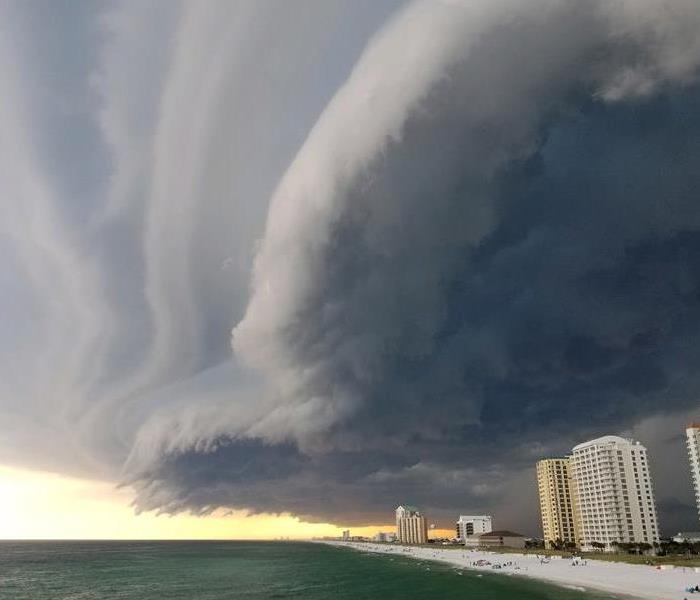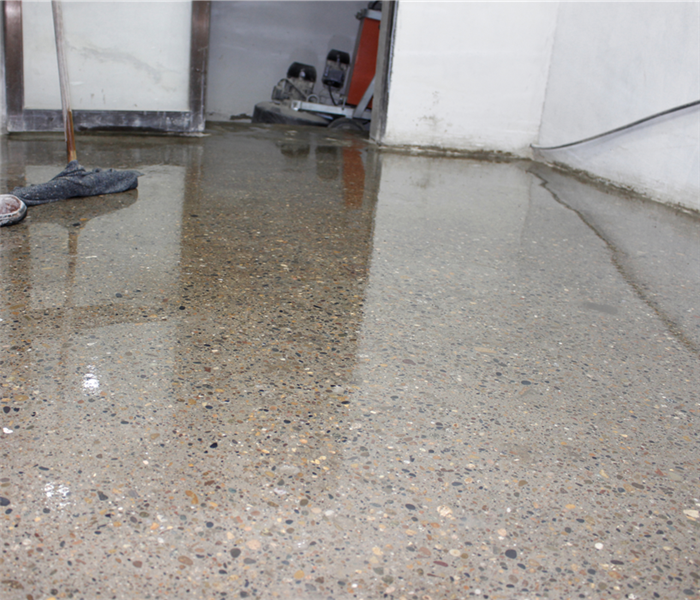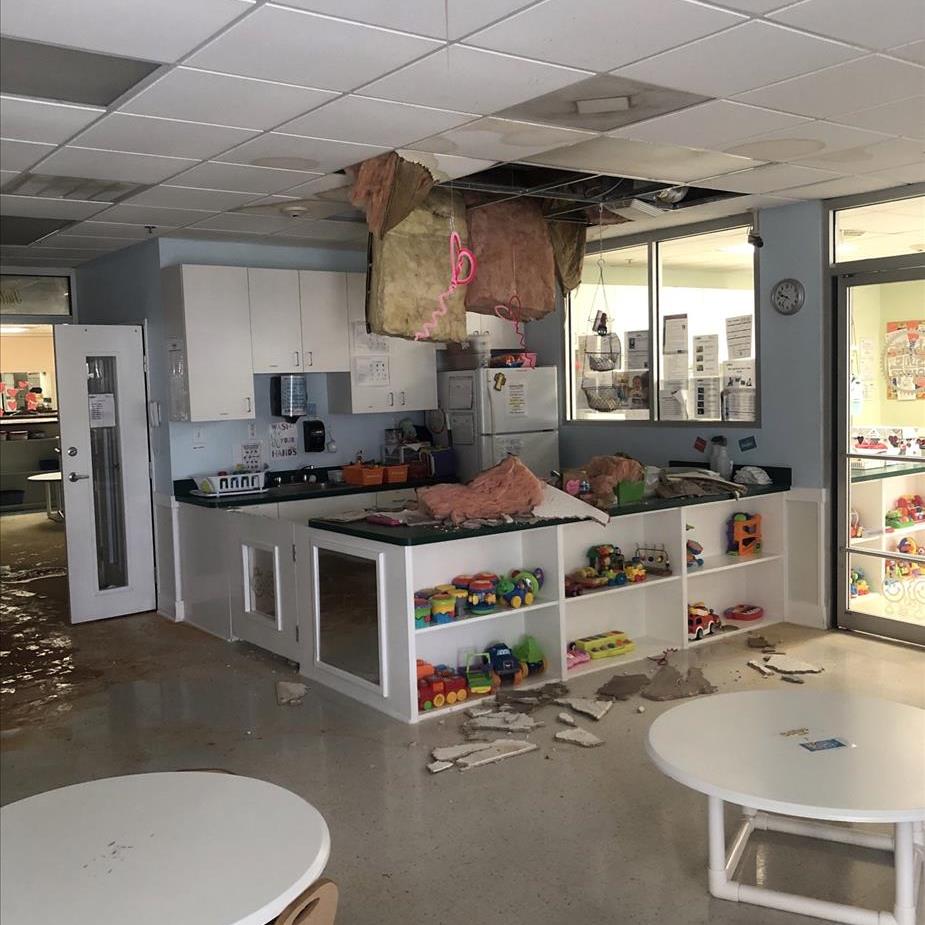Recent Storm Damage Posts
Emergency Response Planning for Storms: Creating a Checklist
1/4/2024 (Permalink)
Living in South Central regions often comes with the risk of severe storms, including hurricanes, tornadoes, and heavy thunderstorms. Having a well-prepared emergency response plan is crucial for ensuring the safety of yourself, your loved ones, and your property during these hazardous weather events. In this blog, we will discuss the essential elements of creating an emergency response checklist specifically tailored for South Central storms, including preparedness, communication, shelter, and post-storm actions.
Preparedness
- Stay informed about storm forecasts by regularly monitoring local weather reports, official meteorological sources, and emergency management agencies.
- Gather essential emergency supplies, including non-perishable food, water, batteries, flashlights, a first aid kit, and medication, and keep them easily accessible.
- Create a family emergency plan that outlines meeting points, emergency contacts, and evacuation procedures. Review and practice this plan with your family members regularly.
Communication
- Have multiple communication methods available, including cell phones, landlines, and battery-powered radios, along with spare chargers.
- Designate an out-of-town emergency contact person that family members can reach to provide updates or coordinate reunification efforts.
- Utilize local emergency alert systems, such as text alerts and smartphone apps, to stay informed about evacuation orders, severe weather warnings, and post-storm updates.
Shelter
- Identify safe shelter locations in and around your home, such as a basement, storm cellar, or interior room without windows. Reinforce these areas if necessary.
- Familiarize yourself with community storm shelters, evacuation routes, and designated meeting points in case you need to seek refuge outside of your home.
- If ordered to evacuate, follow the instructions of local authorities and have a designated evacuation plan in place, including a pre-determined destination and necessary supplies.
Post-Storm Actions
- Exercise caution when venturing outside after a storm, as dangers may still be present, such as downed power lines, fallen trees, and floodwaters.
- Document any damage to your property by taking photographs or videos to assist with insurance claims.
- Report any emergency situations, such as gas leaks or downed power lines, to the appropriate authorities immediately.
- Check on the well-being of neighbors, particularly those who may require assistance, such as the elderly, disabled, or individuals with medical conditions.
Insurance and Documentation
- Review your insurance policy to ensure you are adequately covered for storm-related damages, and keep your policy information easily accessible.
- Keep important documents, such as identification, insurance policies, birth certificates, and medical records, in a secure and waterproof container.
- Consider storing digital copies of important documents and records on cloud storage or a portable drive for easy access during and after the storm.
Creating an emergency response checklist specific to South Central storms is essential for protecting yourself, your loved ones, and your property. By prioritizing preparedness, maintaining effective communication, identifying safe shelter locations, knowing post-storm actions, and documenting important information, you can navigate through storm events with confidence and ensure a swift recovery. Review and update your checklist regularly to stay prepared for South Central storms and enhance your overall emergency response capabilities.
Dealing with Water Damage After a Storm
9/28/2023 (Permalink)
 Water damage can be a challenge after a storm. Contact a professional to help mitigate water and storm damage.
Water damage can be a challenge after a storm. Contact a professional to help mitigate water and storm damage.
Water damage can be a widespread problem after any storm, and it can be particularly devastating for property owners in the South Central region. Storms in this region can bring heavy rainfall, flash floods, and other water-related catastrophes that can ruin your home or business. In this blog post, we will discuss the steps you can take to deal with water damage after a storm in the South Central region.
Ensure Safety First
Before you begin any water damage repair efforts, ensure that you and your family are safe. Be aware that water can carry dangerous chemicals and bacteria that can pose a health risk. Wear protective gear, such as gloves, masks, and boots. Also, be particularly cautious when using any electrical equipment near water, and do not use any electrical devices until you are sure that it's safe to do so.
Take photos or videos of the water damage to document the extent of the damage. This will help your insurance company assess your claim accurately. Take inventory of any damaged possessions, furniture, carpets, and other items, and make a list of them. Include any receipts or other proof of purchase for your items.
Remove Standing Water
Standing water is a breeding ground for mold and other harmful microorganisms that can worsen the damage. Your first step in dealing with water damage should be to remove as much standing water from your property as possible. You can use a pump, mop, or bucket to remove water, then use a dehumidifier or fans to assist with drying any remaining moisture.
After you've removed standing water, your next step should be to dry all wet materials thoroughly. This includes your walls, floors, carpets, and any other furniture or items that were affected. Use fans, dehumidifiers, and open windows to allow air to circulate and dry out damp environments.
Check for Mold
Mold can begin to form within as little as 24 hours after the flooding. Thus, it's important to check for mold growth thoroughly. Check confined areas, like attics, basements, and crawl spaces, as well as areas exposed to water, such as carpets, walls, and ceilings. If you have any concerns, call a professional mold removal company to evaluate it.
Water damage can weaken the structural integrity of your property over time. If you notice any structural damage, it's crucial to address the issue as soon as possible. Check walls, floors, roof, and the foundation for any cracks, warping, or other indications of structural defects. Professional contractors can help evaluate and repair any damage found.
Seek Professional Assistance
Dealing with water damage can be a daunting task. If you are overwhelmed, consider seeking assistance from a professional water damage restoration company. An expert team can help with assessing the damage, developing a repair plan, and carrying out a proper repair process. They have the expertise and specialized equipment required to repair damage quickly and effectively.
Water damage can be a significant challenge after the storm, but dealing with it properly is essential to restore your property to its pre-storm condition. It is imperative to take safety measures, document the damage, remove standing water, dry wet materials, check for mold, address structural damage, and seek professional assistance. The sooner you address water damage, the better. Quick action will minimize expensive repairs and health risks, preventing further deterioration of your property.
Storm Preparedness: How to Keep Water Out of Your Building and Prevent Costly Water Damage
6/15/2023 (Permalink)
 If your building does experience water damage, it's important to act quickly.
If your building does experience water damage, it's important to act quickly.
Storms can bring about a lot of damage, especially to buildings that are not prepared for heavy rain or flooding. Water damage can be very costly to repair, and it's important to take preventative measures to avoid it. Here are some tips on how to keep water out of your building during or after a storm.
Check Your Roof
The roof is the first line of defense against water damage. If your roof is old or damaged, it can easily leak during a storm. Check your roof for missing or damaged shingles, cracks, and other signs of wear and tear. Make sure your gutters are clear of debris and are functioning properly, so water can flow away from your building.
Seal Any Cracks or Gaps
Water can seep in through even the smallest of cracks and gaps. Check your building for any openings around windows, doors, and walls, and seal them up. Use caulk, weatherstripping, or sealant to keep water out.
Invest in Sandbags
If your building is in a flood-prone area, consider investing in sandbags. Sandbags can be stacked around your building to create a barrier against floodwaters. Be sure to place them around any doors or windows to prevent water from entering.
Install a Sump Pump
A sump pump is a device that is used to remove water that has accumulated in a basement or crawl space. It is typically installed in a pit or well that is dug in the lowest part of the basement or crawl space. A sump pump will automatically turn on and pump water out of your building when the water level rises.
Elevate Your Appliances
If you have appliances in your basement or on a lower level, elevate them off the ground. This will help prevent them from getting damaged in the event of a flood. You can use cinder blocks or other sturdy materials to raise them off the ground.
Monitor Weather Reports
Keep an eye on weather reports and take action if a storm is expected to hit your area. Move valuable items to higher ground or away from windows, and make sure your sump pump is working properly.
By taking these steps, you can help prevent water damage to your building during or after a storm. However, if your building does experience water damage, it's important to act quickly. Contact a professional restoration company like SERVPRO to mitigate the damage and restore your building as quickly as possible.
How to Protect Your Home from Storms
1/23/2023 (Permalink)
Severe weather poses a real threat to homeowners. Your home becomes vulnerable to flooding, wind damage, downed branches, and even fire during storms. With spring on its way and tornado season sweeping down the plains, it’s best to prepare your home for severe weather before it hits. Here are some tips to protect your home incase of inclement weather, and what to do if you are hit with storm damage.
Tidying up
As the saying goes, the best defense is a good offense. Before the storm clouds roll in, there are a few things you to do to prepare your home:
- Take a good look at your roof and replace any damaged or missing shingles. This helps keep water out of your home and prevent leaks and drips.
- Give the water a place to flow. Clear out your gutters and any run off areas, ensuring the water flows away from your home.
- Look up and assess the trees around your home. Are any branches hanging over the house? Any dead branches that could swing down and crush your home or car? Trim those dangerous branches away or hire an arborist to take care of the problem for you.
- Make sure your windows and doors have a good water tight seal. If they need a little help, add some caulk to keep the water out.
Investing in Protection
There are a few things to invest in preemptively to keep your home extra safe from storm damage and keep your family comfortable incase you lose power. Consider investing in a generator to keep your home functioning even during mass power outages.
To keep your home even safer, you should also invest in storm shutters or steel doors. These add an extra layer of protection from water and anything that the wind might pick up and throw in your direction.
Be Prepared
No matter how well protected your home is, it’s best to be prepared for the worst case scenario. An emergency kit is a necessity for any home, especially during storm season. Keep a bag or bin in your home that has essential items in case of an emergency. Include a first aid kit, three days of non-perishable food, water bottles or jugs, a battery operated radio, batteries, flashlights, a change of clothes, your pet’s food, and anything else you deem necessary.
When Storm Damage Strikes
Even if your home is as protected as possible, life offers no guarantees. Storms are very unpredictable and storm damage happens to anyone. If you find yourself with a tree in your living room, a flooded basement, or anything in between, call SERVPRO of Downtown Houston/ Team Meacham! We are on your property as soon as possible to get your home back to its pre-damaged condition quickly. We handle storm damage big and small, from a small leak to a downed tree, we handle it all!
Consider saving our number in your phone so when disaster strikes, we have our crews at your home as fast as possible to preserve and protect your property. We assess your property and determine what needs to be done to restore it safely. Our team also treats your home as if it were our own and cleans and sanitizes any damaged personal belongings as well. Restoring structural damage to flooring, sheetrock, or any damaged part of your home is our specialty. Once your home is completely restored, we return all of your reconditioned items and wish you a good and safe day in your restored property!

 24/7 Emergency Service
24/7 Emergency Service


